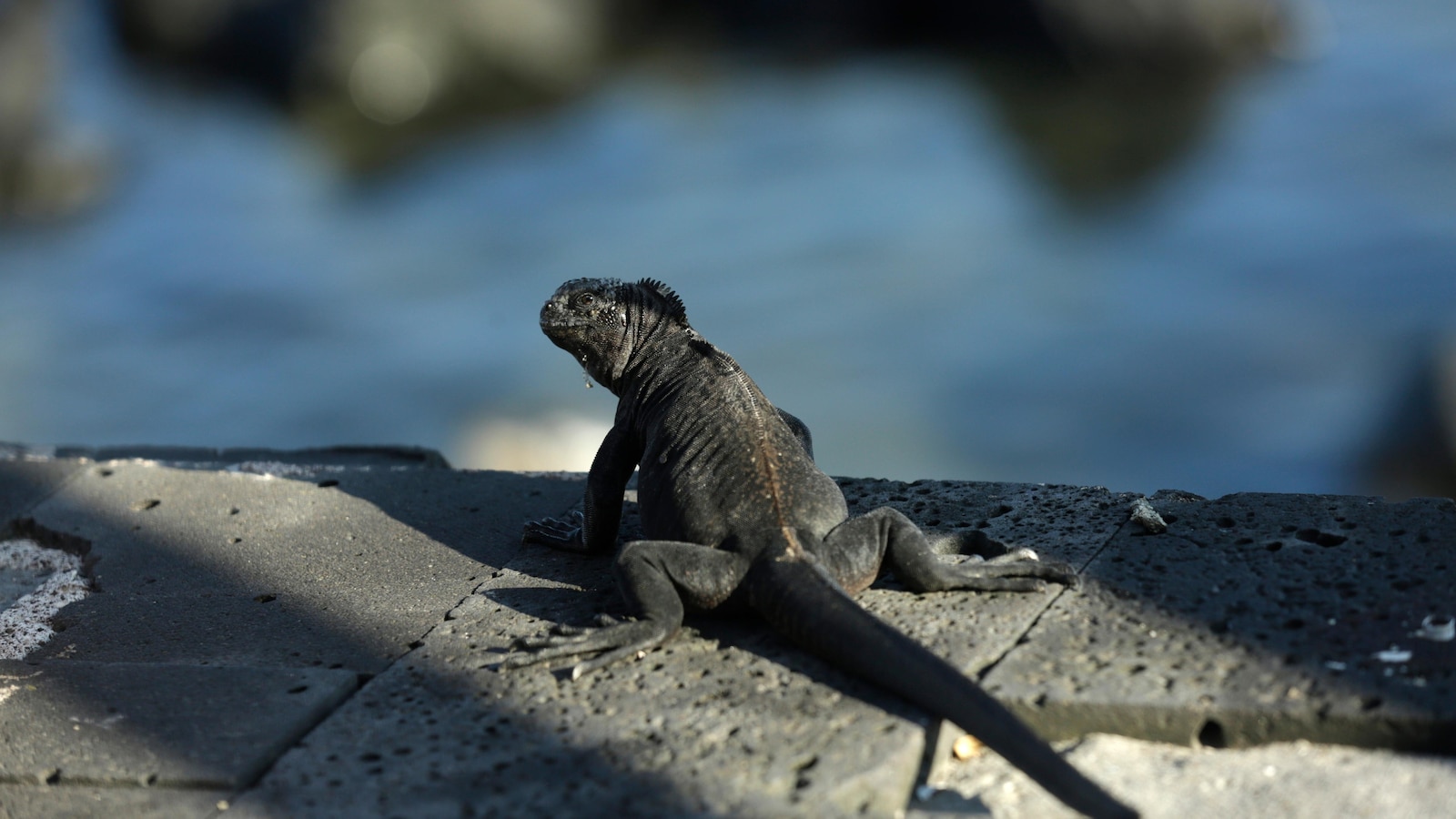California Schools Face a Shade Crisis: How Lack of Tree Cover Threatens Student Wellbeing – Azat TV

Report on Urban Tree Canopy Decline in California Public Schools and Implications for Sustainable Development Goals
Executive Summary
A recent analysis of California’s urban public schools reveals a significant decline in tree canopy cover, posing direct challenges to several United Nations Sustainable Development Goals (SDGs). Between 2018 and 2022, 85% of these schools experienced an average tree cover loss of 1.8%. The current median tree canopy on K-12 campuses is a mere 6.4%, concentrated in non-recreational areas. This deficit directly impacts student health, exacerbates social inequalities, and undermines climate resilience efforts. This report outlines the key findings, connects them to specific SDGs, identifies barriers to progress, and proposes a path forward aligned with sustainable development principles.
Analysis of Current Schoolyard Conditions
Key Findings
- Widespread Tree Cover Loss: The vast majority of urban schools (85%) saw a net reduction in tree canopy over a four-year period.
- Insufficient Shade: The median tree canopy of 6.4% is critically low, failing to provide adequate protection from solar radiation in play and learning areas.
- Inequitable Distribution: Existing trees are often located at campus entrances or in parking lots rather than in areas of student activity.
- Regional Disparities: Data indicates significant local variations, with San Francisco’s school district losing 16.3% of its tree cover while Sacramento’s gained 7.5%, highlighting inconsistent progress.
Alignment with Sustainable Development Goals (SDGs)
The state of California’s schoolyards has direct implications for the achievement of multiple SDGs.
SDG 3: Good Health and Well-being
The lack of shade exposes over 5.8 million children to extreme heat, a significant public health risk. Children are physiologically more vulnerable to heat-related illnesses. Increasing tree canopy is a critical public health intervention to safeguard their well-being on school grounds.
SDG 10: Reduced Inequalities
The “shade gap” is an issue of environmental justice. Schools in lower-income neighborhoods, which often experience more severe urban heat island effects, have been identified as having the least tree cover. This disparity compounds existing social and economic inequalities, placing the most vulnerable students at the greatest risk.
SDG 11: Sustainable Cities and Communities
Schoolyards function as vital community green spaces. Transforming these paved areas into green, shaded environments contributes to creating more resilient, inclusive, and sustainable urban communities. Greening initiatives directly support the goal of providing universal access to safe and green public spaces.
SDG 13: Climate Action
Increasing tree canopy on school campuses is a direct and effective climate adaptation strategy. Trees mitigate extreme temperatures, reduce the urban heat island effect, and build local resilience to the escalating impacts of climate change, such as more frequent and intense heat waves.
Barriers to Schoolyard Greening Implementation
Several systemic challenges hinder progress toward achieving adequate shade and green space in schools.
- Policy and Regulatory Constraints: Existing regulations, including seismic safety codes that favor single-story construction and mandates for non-grass surfaces for sports, limit opportunities for planting.
- Financial and Maintenance Hurdles: Limited staffing for tree maintenance and funding models that prioritize low-maintenance, heat-absorbing surfaces like asphalt present significant obstacles.
- Bureaucratic Inefficiencies: Complex administrative processes can delay or prevent the implementation of greening projects, even when funding is available.
Recommendations and Path Forward
A concerted effort is required to reverse the trend of tree canopy loss and align schoolyard development with sustainability objectives.
Strategic Actions
- Effective Allocation of Funding: The $150 million in state grants from Cal Fire must be strategically deployed to schools in the most heat-vulnerable and underserved communities to address the equity gap defined in SDG 10.
- Data-Informed Design: Utilize research on microclimates to ensure new plantings provide maximum cooling benefits in student-centric areas like playgrounds and lunch areas, advancing SDG 3.
- Policy Reform: Re-evaluate and amend policies that inadvertently discourage green infrastructure in favor of paved surfaces to better support climate action goals (SDG 13).
- Community and Stakeholder Engagement: Foster collaboration between school districts, researchers, and local communities to ensure greening projects are sustainable, well-maintained, and integrated into the educational mission, supporting SDG 4 (Quality Education) by creating improved learning environments.
Analysis of Sustainable Development Goals in the Article
1. Which SDGs are addressed or connected to the issues highlighted in the article?
-
SDG 3: Good Health and Well-being
- The article directly connects the lack of shade in schoolyards to public health, stating that “Extreme heat is more than just uncomfortable—it’s a mounting public health crisis.” It emphasizes the vulnerability of children, whose bodies are still developing temperature regulation, and notes that without shade, “the risks range from heat exhaustion to impaired learning.” This highlights a direct threat to the physical and mental well-being of students.
-
SDG 4: Quality Education
- The physical environment of a school is crucial for learning. The article points out that heat can lead to “impaired learning.” By focusing on the need to improve school facilities (schoolyards) to make them safer and more comfortable, the article addresses the goal of providing “effective learning environments.” The lack of shade creates a suboptimal, and at times unsafe, environment for recess, physical education, and other outdoor school activities.
-
SDG 10: Reduced Inequalities
- A central theme of the article is the inequitable distribution of green spaces. It states that “the shade gap reflects deeper inequities” and that “schools in lower-income neighborhoods… face much harsher outdoor conditions.” This directly points to inequalities based on socioeconomic status, where vulnerable communities are disproportionately affected by environmental hazards, a key concern of SDG 10.
-
SDG 11: Sustainable Cities and Communities
- The article focuses on urban public schools and the importance of green spaces (tree canopies) within these community hubs. It discusses making these spaces safer and more resilient for children. The effort to increase tree cover in schoolyards is an initiative to create “safe, inclusive and accessible, green and public spaces” within the urban environment, which is a core objective of SDG 11.
-
SDG 13: Climate Action
- The entire issue is framed within the context of climate change, referring to a “warming state,” “rising global temperatures,” and “climate resilience.” Planting trees is presented as a key adaptation strategy to mitigate the effects of extreme heat. The article notes that trees “play a really big role in helping us cool down those schools and also build climate resilience,” directly aligning with the goals of strengthening resilience and adaptive capacity to climate-related hazards.
2. What specific targets under those SDGs can be identified based on the article’s content?
-
Target 3.d (under SDG 3)
- “Strengthen the capacity of all countries… for early warning, risk reduction and management of national and global health risks.” The article discusses managing the public health risk of extreme heat, particularly for a vulnerable population (children). Greening schoolyards is a direct risk reduction strategy to prevent heat-related illnesses.
-
Target 4.a (under SDG 4)
- “Build and upgrade education facilities that are… safe… and effective learning environments for all.” The article’s call to action is to transform paved, hot schoolyards into green, shaded areas. This is a direct call to upgrade educational facilities to ensure they are safe from heat hazards and conducive to learning and play.
-
Target 10.2 (under SDG 10)
- “By 2030, empower and promote the social, economic and political inclusion of all, irrespective of… economic or other status.” The article highlights that “disparities persist, with poorer neighborhoods suffering the most from lack of shade.” Addressing this shade gap is a step toward ensuring that children in lower-income communities are not excluded from safe and healthy school environments.
-
Target 11.7 (under SDG 11)
- “By 2030, provide universal access to safe, inclusive and accessible, green and public spaces, in particular for… children.” Schoolyards are public spaces for children. The initiative to increase tree canopy aims to make these spaces safer and greener, directly aligning with this target.
-
Target 13.1 (under SDG 13)
- “Strengthen resilience and adaptive capacity to climate-related hazards and natural disasters in all countries.” The article explicitly frames schoolyard greening as a measure to “build climate resilience” against the “mounting public health crisis” of extreme heat, which is a direct climate-related hazard.
3. Are there any indicators mentioned or implied in the article that can be used to measure progress towards the identified targets?
-
Percentage of tree canopy cover on school campuses
- The article provides specific data points that can serve as a baseline indicator: “median tree canopy across the state’s K-12 campuses is a mere 6.4%.” Progress can be measured by tracking the increase in this percentage over time.
-
Rate of change in tree cover
- The article mentions that “85% of urban public schools in California lost an average of 1.8% of their tree cover between 2018 and 2022.” It also cites specific district changes, such as San Francisco’s 16.3% loss and Sacramento’s 7.5% gain. This rate of change is a direct indicator of whether greening efforts are succeeding or failing.
-
Disparity in tree canopy between schools in different socioeconomic areas
- The article implies this indicator by stating that “schools in lower-income neighborhoods… face much harsher outdoor conditions.” An effective indicator for SDG 10 would be to measure and track the difference in median tree canopy between schools in high-income and low-income areas, with the goal of reducing this gap.
-
Surface temperature reduction in schoolyards
- The article notes that researchers were “measuring heat across different surfaces” and found a “dramatic” difference between shaded and unshaded areas. This temperature differential can be quantified and used as an indicator of the effectiveness of greening interventions in mitigating heat risk (relevant to SDGs 3 and 13).
-
Funding allocated for schoolyard greening projects
- The article mentions that “$150 million in state grants is available for schoolyard greening.” The amount of funding allocated and disbursed can serve as an input indicator to measure the level of commitment and resources dedicated to achieving these goals.
Summary of Findings
| SDGs | Targets | Indicators |
|---|---|---|
| SDG 3: Good Health and Well-being | 3.d: Strengthen capacity for risk reduction and management of national health risks (e.g., extreme heat). |
|
| SDG 4: Quality Education | 4.a: Build and upgrade education facilities to provide safe and effective learning environments. |
|
| SDG 10: Reduced Inequalities | 10.2: Promote inclusion of all, irrespective of economic or other status. |
|
| SDG 11: Sustainable Cities and Communities | 11.7: Provide universal access to safe, inclusive, and accessible green and public spaces, especially for children. |
|
| SDG 13: Climate Action | 13.1: Strengthen resilience and adaptive capacity to climate-related hazards. |
|
Source: azat.tv
What is Your Reaction?
 Like
0
Like
0
 Dislike
0
Dislike
0
 Love
0
Love
0
 Funny
0
Funny
0
 Angry
0
Angry
0
 Sad
0
Sad
0
 Wow
0
Wow
0



















































.jpg.webp?itok=0ZsAnae9#)
























